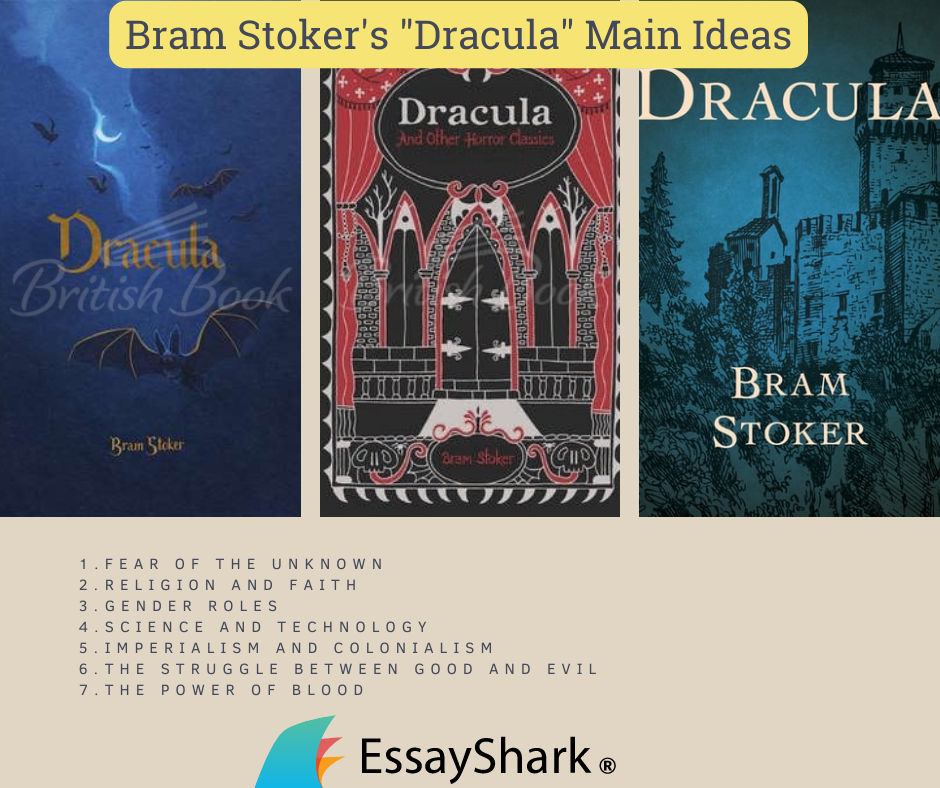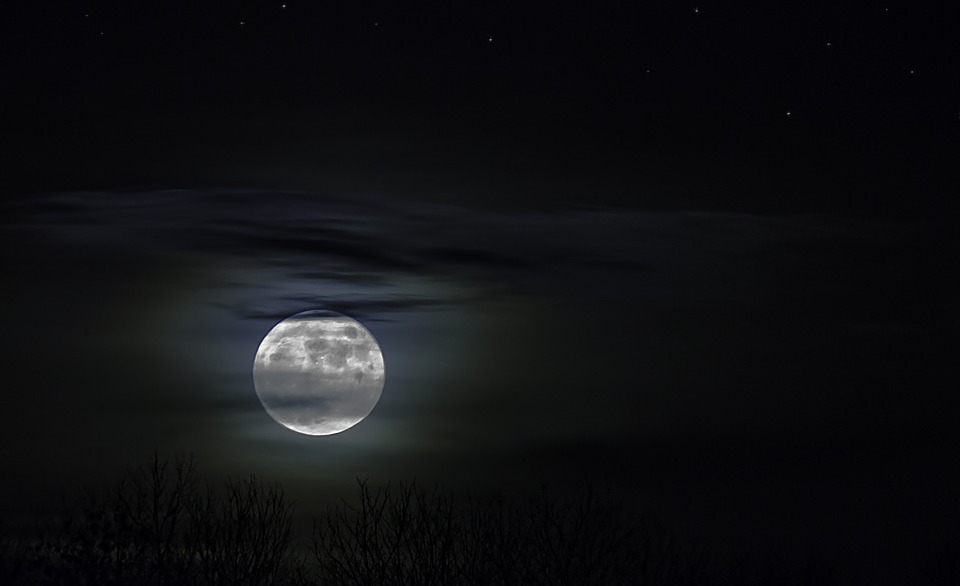Vampires seem to be the superheroes of today. They are strong, beautiful, and glint in the sun. In addition, they totally ignore their bloodlust and don’t hurt people anymore. The original concept of the vampire has been distorted by modern authors. This list of awesome essay topics on “Dracula” by Bram Stoker will remind you that true vampires have nothing in common with Edward Cullen.
If you are not afraid of horrors and mysteries, you are welcome to read our list thoroughly. We are sure that you will find something worth your attention in this collection of “Dracula” paper topics.
In case you need to prepare a presentation about Dracula, you might want to use our free words to minutes converter.
You are also free to leave your essay to the experienced authors of EssayShark.com! As you can see, our company is here to assist you in multiple ways!
“Dracula” essay topics that explore 21st-century issues
- Surveillance and privacy in Dracula: Parallels to the digital age.
- Toxic masculinity and power struggles in Dracula and modern society.
- Mental health in Dracula: Then and now.
- Colonialism and cultural fear in Dracula: Echoes in contemporary global politics.
- Religious fundamentalism and secularism: A 21st century take on good vs. evil in Dracula.
- Disease, pandemic panic, and the vampire metaphor in a post-COVID world.
- Parallels between Dracula’s draining of life and social media’s consumption of time, identity, and attention.
- Vampirism and capitalism: Consumption, exploitation, and economic power
- The fear of the unknown: Dracula and the rise of artificial intelligence
- Isolation and human connection: Lessons from Dracula in the age of loneliness.
Table of contents
- Literary analysis topics about “Dracula” by Bram Stoker
- “Dracula” argumentative essay topics
- Analytical essay topics on “Dracula” by Bram Stoker
- Compare and contrast “Dracula” essay topics
- “Dracula” essay topics about vampires
- “Dracula” paper topics on psychology
- “Dracula” paper topics on religion and faith
- “Dracula” by Bram Stoker main ideas of the novel
- To sum up
Literary analysis topics about “Dracula” by Bram Stoker
- What effect does Stoker reach by keeping the main character in the shadows for so much time in the novel?
- Is there any connection between the structure and content of “Dracula” by Bram Stoker?
- How does the epistolary style enforce the overall impression from the novel “Dracula”?
- Why is setting important for perception of Stoker’s novel?
- Analyze the elements of the detective story in “Dracula” by Bram Stoker.
- How does the character of Renfield contribute to the Gothic atmosphere on the novel “Dracula”?
- How do female characters in “Dracula” by Stoker contribute to the representation of the conflict between good and evil?
- Sexual overtones as an element of the novel “Dracula.”
- The historical background of the novel “Dracula” by Bram Stoker.
- Gothic elements in “Dracula” by Bram Stoker.
- Dracula’s character as a political threat.
- The function of letter writing in Bram Stoker’s novel “Dracula.”
- What traits of Victorian literature can be identified in the novel “Dracula”?
- The novel “Dracula” by Bram Stoker as a Gothic classic.
- Diversity of literary devices in “Dracula” by Bram Stoker.
“Dracula” argumentative essay topics
- Are social rules significant for Dracula’s character?
- Can the character of Dracula in Bram Stoker’s novel be considered as an allusion to the aristocracy, the dying breed at the end of the 19th century?
- Why is Jonathan Harker blind to mystical occurrences around him at the beginning of the novel?
- Can Lucy Westenra be considered as a stereotypical “good girl” or “bad girl”?
- Which main character of the novel “Dracula” awakens indisputable sympathy?
- Why is the issue of insanity crucial for the novel “Dracula”?
- What issues developed in the novel “Dracula” are acute today?
- Why does Dracula choose Lucy to be his first victim?
- Why (or why not) does Mina represent the traditional female character of the 19th century?
- Choose the most significant conflict in the novel “Dracula,” analyze it, and explain your choice.
Analytical essay topics on “Dracula” by Bram Stoker
- Analyze how Bram Stoker interprets Darwinian theory in his novel “Dracula.”
- The role of the “alien” in Bram Stoker’s novel “Dracula.”
- What forces does Dracula represent in the novel?
- Analyze the metaphorical meaning of Dracula’s character.
- Strengths and weaknesses of the patriarchal society in the novel “Dracula.”
- Sanity and insanity of the main characters in the novel “Dracula” by Bram Stoker.
- The superiority of Western culture in the novel “Dracula.”
- Analyze the main reasons for paranoia of the protagonists in the novel “Dracula.”
- The representation of Freudian theories in Stoker’s “Dracula.”
- Sexism as the main idea of Bram Stoker’s “Dracula.”
- Analyze the doubled characters in the novel “Dracula.”
- How does Bram Stoker interpret the issue of invasion anxieties in “Dracula”?
- The classic conflict of Good and Evil in Stoker’s “Dracula.”
- Who or what is Dracula according to Bram Stoker’s novel?
- Why do the characters of “Dracula” question their own sanity in some episodes?
- How is the topic of sexual orientation represented in Stoker’s “Dracula”?
- Examine the alternative families represented in the novel “Dracula.”
- How is the fear of vampires connected with the real fears of Victorian society?
- Liminality of Dracula’s character: living dead among people.
- Western culture vs. Eastern culture in Bram Stoker’s “Dracula.”
- Explain the issue of reverse colonization based on the novel “Dracula” by Bram Stoker.
- Van Helsing’s character as a synthesis of scientific knowledge and supernatural beliefs.
- The metaphorical meaning of Dracula’s invasion of London.
- Anti-feministic ideas in Stoker’s “Dracula.”
- How can the popularity of Stoker’s novel since its first release in 1897 be explained?
Compare and contrast “Dracula” essay topics
- Compare and contrast the characters of Bram Stoker’s “Dracula” and F. W. Murnau’s “Nosferatu” (1922).
- Compare and contrast the role of women in Euripides’ “Medea” and in Stoker’s “Dracula.”
- Compare and contrast the representation of sexuality in Bram Stoker’s “Dracula” and the movie “Dracula” directed by Francis Ford Coppola.
- Compare and contrast the characters of three of Lucy’s suitors in “Dracula.”
- Compare and contrast the vampire characters in “Interview With the Vampire” by Rice and “Dracula” by Stoker.
- Compare and contrast how Dracula’s character awakens sympathy in the novel by Bram Stoker and in the movie directed by Francis Ford Coppola.
- Compare and contrast Stoker’s vampires and today’s stereotypes about them.
- Compare and contrast the nature of Bram Stoker’s Dracula and Robert Louis Stevenson’s Mr. Hyde.
- Compare and contrast the plot of the movie “Dracula” (1931) and the original novel written by Bram Stoker.
- Compare and contrast the representation of female characters in Stoker’s “Dracula” and in its movie adaptation in 1992 directed by Francis Ford Coppola.
- Compare and contrast the concept of the vampire created by Bram Stoker and the depiction of this creature in myths.
- Compare and contrast Dracula’s and Jonathan’s attitude toward love and affection.
- Compare and contrast Dracula’s character created by Bram Stoker and its comic interpretation in the film “Vampire in Brooklyn” directed by Wes Craven.
- Compare and contrast how London of the 19th century is depicted in “Dracula” by Bram Stoker and in “Strange Case of Dr. Jekyll and Mr. Hyde” by Robert Louis Stevenson.
- Compare and contrast the role of traveling in Stoker’s “Dracula” and in Shelley’s “Frankenstein.”
“Dracula” essay topics about vampires
- The evolution of vampire characters from “Dracula” by Bram Stoker to “Twilight” by Stephenie Meyer.
- Supernatural abilities of Dracula in Stoker’s novel.
- Analyze the connection between the primeval instincts and vampirism basing on the novel “Dracula” by Bram Stoker.
- Vampirism as a synthesis of taboos in Stoker’s novel.
- Describe Dracula’s castle and its residents.
- How does vampirism destabilize moral values in “Dracula” by Bram Stoker?
- Vampirism as a symbol of the immoral lifestyle in Stoker’s “Dracula.”
- Can vampires fall in love according to Bram Stoker’s novel?
- Dracula as a symbol of the unknown and fate in Bram Stoker’s novel.
- The best cinematic “Dracula” in history.
“Dracula” paper topics on psychology
- Masculine authority in Bram Stoker’s “Dracula.”
- Lucy Westenra as a rebel character in the novel “Dracula.”
- The connection of horror and desire in Stoker’s “Dracula.”
- The role of rational and irrational in Stoker’s novel “Dracula.”
- The problems of psychological science in Stoker’s “Dracula.”
- Hysteria in the characters of Lucy and Mina in Stoker’s novel.
- The attitude toward foreigners in Stoker’s “Dracula.”
- Types of masculinity represented in Stoker’s “Dracula.”
- The fear of nonstandard sexual orientation in Victorian England depicted in “Dracula.”
- The role of mental diseases in “Dracula” by Bram Stoker.
“Dracula” paper topics on religion and faith
- How does Dracula’s lifestyle violate Christian values?
- The role of curse and redemption in the novel “Dracula.”
- The conflict between science and faith in “Dracula” by Bram Stoker.
- The representation of anti-Christian ideas in Bram Stoker’s novel “Dracula.”
- Strength of character and faith vs. demonic powers in the novel “Dracula.”
- Insult against religious beliefs in the novel “Dracula.”
- The role of religion and sacred objects in the plot of “Dracula.”
- The novel “Dracula” by Bram Stoker as a Christian allegory.
- Can Van Helsing’s actions be considered as witchcraft or religious rites?
- The origin of evil in Stoker’s “Dracula.”
“Dracula” by Bram Stoker main ideas of the novel
 Fear of the unknown. By delving into the dread of the unknown, particularly concerning all things supernatural, this novel artfully explores our fears. Dracula himself instills a feeling of terror and unease with his otherworldly powers and capability to transform from human to bat. This dreaded figure casts an ominous pall throughout the story that keeps us in suspense until its climax. Speaking of fear of the unknown, don’t let it stop you when you’re working on your writing assignments, and let our experts show you how to write a thematic essay without stress. They have many years of experience and will gladly share their tips with you.
Fear of the unknown. By delving into the dread of the unknown, particularly concerning all things supernatural, this novel artfully explores our fears. Dracula himself instills a feeling of terror and unease with his otherworldly powers and capability to transform from human to bat. This dreaded figure casts an ominous pall throughout the story that keeps us in suspense until its climax. Speaking of fear of the unknown, don’t let it stop you when you’re working on your writing assignments, and let our experts show you how to write a thematic essay without stress. They have many years of experience and will gladly share their tips with you.- Religion and faith. Through its investigation of religion and faith, this novel delves into the struggle between good and evil. As protagonists confront Dracula, they rely on religious symbols and ceremonies to protect themselves from harm. The narrative paints a vivid picture of this spiritual battle where strength is far more than physical in nature; it also extends beyond what is visible to us.
- Gender roles. Mina Harker is the embodiment of challenging traditional gender roles in this novel, being both intelligent and independent. Additionally, Lucy Westenra’s character offers an examination of female sexuality as a key theme throughout the plot.
- Science and technology. Bram Stoker’s classic gothic novel, Dracula, is rich with science and technology. Van Helsing skillfully combats the vampire using modern medicine and technological advances – a timeless tale of good versus evil.
- Imperialism and colonialism. The 19th century is illuminated in this novel, particularly the era of British imperialism and colonialism. This story doesn’t just address Britain’s superiority but delves into how other cultures are feared and admired at the same time. Keep in mind that our writers can help you explore any historical period and develop non-trivial Renaissance research topics to manage your assignments faster.
- The struggle between good and evil. In this classic tale of good versus evil, the characters join forces to overcome Dracula’s malevolent power. Additionally, it delves into the concept that danger can originate from both internal and external sources.
- The power of blood. The novel uses blood as a recurring theme, signifying both life and death. Much like endangered species research topics, which explore the delicate balance between survival and extinction, the novel investigates the importance of blood in different situations, symbolizing ancestry and origin, providing sustenance to vampires, or acting as a transporter for various diseases.
To sum up
Now, you are ready to fight vampires! Sure, we don’t suggest you to walk along the streets at night and look for troubles. You’d better use this list of inspiring essay topics on “Dracula” by Bram Stoker to write an excellent essay and get an “A.” However, our service is always at your disposal. If you are unsure how to write an introduction or need interesting ideas and essay prompts for Of Mice and Men, just place an order, and our experts will assist you in no time. Stay safe and keep handy a bottle of holy water. Just in case.









